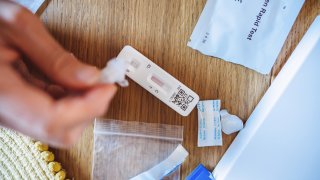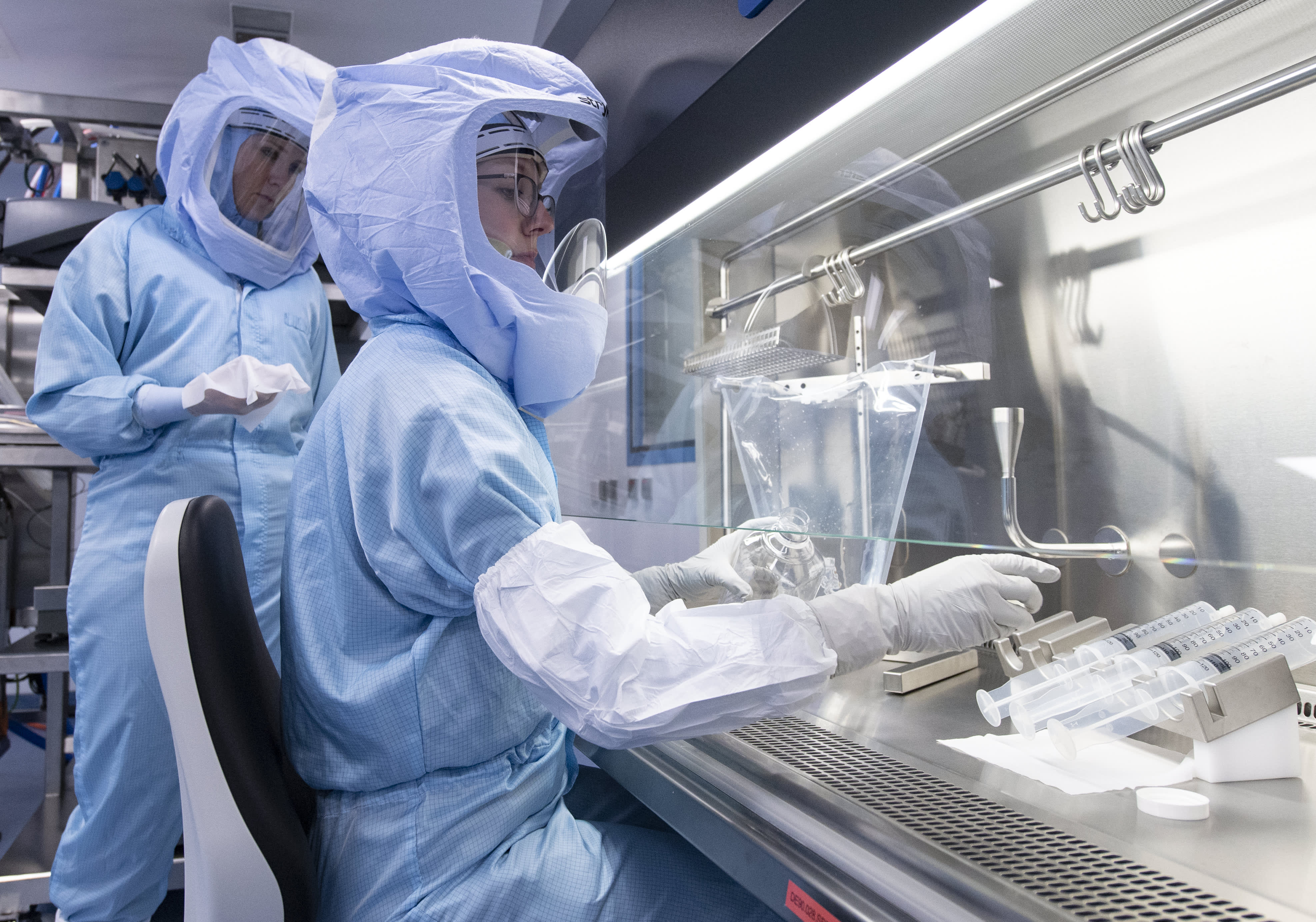
The COVID-19 pandemic may not be on the top of many's minds this holiday season, but the virus is spreading nationwide. According to NBC News, there are still close to 40,000 average daily U.S. Covid cases and around 300 deaths per day.
As the country prepares to enter the third holiday season with the deadly virus, testing remains crucial to stop the spread.
Here is the latest guidance from the Centers for Disease Control and Prevention and the Food and Drug Administration about how to get tests, interpret an expiration date, and understand a negative result even if one is experiencing symptoms or known exposure.
Private insurance and Medicare cover up to eight at-home tests a month
We've got the news you need to know to start your day. Sign up for the First & 4Most morning newsletter — delivered to your inbox daily. Sign up here.
Since January, the Biden administration has required private insurers and Medicare to cover up to eight monthly at-home tests. As a result, people with a health plan can go online or in-person to a pharmacy to purchase the tests authorized by the U.S. Food and Drug Administration (FDA) at no cost, either through reimbursement or free of charge through their insurance.
Medicare also pays for COVID-19 diagnostic tests performed by a laboratory, such as PCR and antigen tests.
COVID-19 Coverage
Government-Provided At-Home Tests Are No Longer Available
Due to a lack of congressional funding, the federal program that distributed up to 16 free at-home tests to households by mail ended on Sept. 2.
How to Find Free Testing Sites
Even though some sites that provided free rapid or PCR tests earlier in the pandemic have closed, the Department of Health and Human Services has an online search tool to find nearby sites. Most of the locations are pharmacies like Walgreens and CVS.
Shelf Lives of Tests May Last Longer Than Expected
Many companies of at-home COVID-19 tests have extended many its original expiration dates since the tests were authorized. Manufacturers had provided evidence to the government that the tests give accurate results for longer than was known when companies first made the tests.
For example, Abbott's BinaxNOW at-home test says a shelf life is 15 months, but the company extended the expiration dates of many batches by three to six months. Other examples include the brand name Flowflex's extending to 19 months and the iHealth Labs test to 12 months.
To check whether a brand revised the expiration date of a particular test, visit the FDA's list and look up the lot number.
When to Test
There are critical times to get tested. According to the CDC, if you have symptoms, test right away.
If you were exposed to COVID-19 and did not have symptoms, wait at least five full days after your exposure before testing. If you test too early, you might not get an accurate result. The CDC also recommends testing before meeting someone at high risk for severe COVID-19.
How Accurate Are At-Home Tests?
PCR tests are more sensitive and accurate than at-home tests, but results can take at least 24 hours to receive, if not days. At-home tests rarely give false positives but can give false negatives, even if someone is showing symptoms. The false negatives mainly occur during the early days of infection.
To prevent people from unknowingly spreading the virus to others, the FDA recommends repeat testing following a negative result whether or not a person has symptoms.
At-Home Tests Are a Good Indicator of Contagiousness
At-home tests are a good indicator if a person is infectious. However, it is still possible to test negative on an at-home test or positive and not spread the virus to others.
Studies have shown that people are more likely to be infectious at the start of their illness. For example, an August study found that 65% of people with Covid shed the contagious virus five days after their symptoms started, but just 24% were still doing so after a week.
How Long to Isolate if You Do Test Positive
If you test positive for COVID-19, the CDC guidance says to stay home for at least five days and isolate yourself from others. A person is most infectious during these five days. If you must be around others at home and in public, wear a high-quality mask such as an N95.
The CDC says you should not travel and improve ventilation, such as opening windows and using fans to improve airflow.



